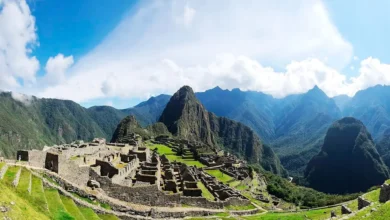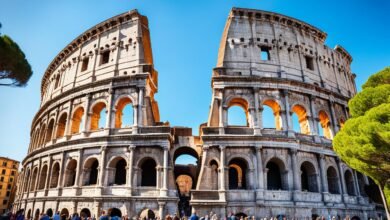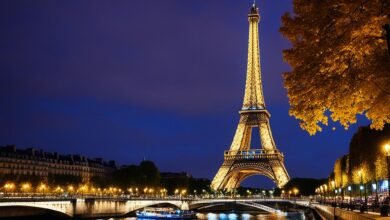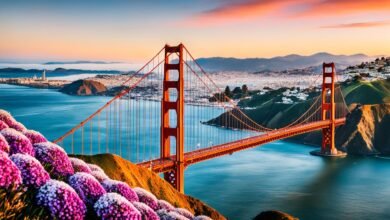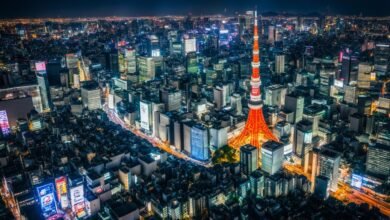Table of Contents
Have you ever dreamed of seeing the Northern Lights (or aurora borealis) light up the sky? You’re not the only one. It’s a top dream for many. And Iceland is a top pick for this dream, with its stunning displays. But figuring out the best time can be a challenge. Let’s find out more.
Introduction to the Northern Lights in Iceland
The Northern Lights, also known as the aurora borealis, are a mysterious light show in the sky. They happen when solar particles hit the Earth’s atmosphere. This makes the sky light up in beautiful, swirling colors.
Iceland, with its high northern location and dark winters, is perfect for seeing this wonder. Many people dream of seeing the Northern Lights once in their lives. Planning a trip to Iceland at the right time means you’ll have a good chance of witnessing this natural marvel.
What is the Best Time of Year to See the Northern Lights in Iceland?
The best time to see the Northern Lights in Iceland is during the winter months, from September through April. This is when the nights are longest and darkest, providing ample opportunities for the aurora borealisto be visible.
Iceland’s Northern Lights Season
The optimal months for viewing the Northern Lights in Iceland are typically November, December, and January. These are the darkest months, with up to 20 hours of darkness per day. However, the Northern Lights can be seen as early as September and as late as April, depending on weather conditions and solar activity.
The summer months are not ideal for Northern Lights viewing in Iceland because of longer daylight hours and the midnight sun phenomenon.
Best Months for Viewing the Aurora Borealis
While the Northern Lights can be seen throughout the winter season, the peak months are typically November, December, and January. During these months, the longer darkness provides the best chances to see the aurora borealis display.
However, keep in mind that seeing the Northern Lights depends a lot on weather and solar activity. So plan your trip wisely.
When is the best time to see the Northern Lights in Iceland?
The best time to see the Northern Lights in Iceland is during the winter months, from September through April. Nights are longer and darker then. This makes it perfect for watching the aurora borealis.
The peak months for Northern Lights viewing are November, December, and January. With up to 20 hours of darkness each day, these months are the darkest in Iceland. But you can also catch the Northern Lights from September to April. However, this depends on the weather and solar activity.
It’s key to know that the summer months are not great for seeing the Northern Lights in Iceland. It’s because of the long daylight hours and the midnight sun phenomenon.
What are the Best Conditions for Viewing the Northern Lights?
To see the Northern Lights in Iceland, certain things must happen.
Firstly, strong solar activity is key. The Northern Lights result from sun particles meeting Earth’s air. A Kp-index of 3 or more is best for viewing.
Clear Skies
Next, you need clear skies. Clouds can block the aurora’s view. Check the Icelandic Meteorological Office’s cloud forecasts for prime spots.
Minimal Light Pollution
Lastly, avoid too much light to see clearly. Head to dark, secluded places for the best Northern Lights show. This means going away from bright city lights.
Top Destinations in Iceland for Northern Lights Viewing
The Northern Lights can be seen from many places in Iceland. But some areas are better for viewing them. Let’s look at the top spots to see the beautiful aurora borealis in Iceland.
Reykjavik and Surrounding Areas
In and around Reykjavik, places like Grotta Nature Reserve and the Sun Voyager sculpture stand out. They have dark skies and less light pollution, perfect for seeing the Northern Lights. It’s amazing to see the lights over the city’s famous sites like Sun Voyager.
South Iceland and Vík
Heading south, Vík’s fishing village and Reynisfjara’s black sand beaches are stunning for Northern Lights. The coastal views add to the beauty. The lights in the sky, with waves crashing below, make a memorable sight.
Westfjords and North Iceland
The Westfjords and North Iceland have more remote spots with longer dark hours. This makes them great for seeing the Northern Lights. Here, you have wide views and less light to interrupt the experience.
Þórsmörk Nature Reserve
Lastly, Þórsmörk Nature Reserve can be reached by a super jeep in winter. This spot is very remote. Surrounded by glaciers and mountains, it’s a perfect place for the Northern Lights.
Tips for Maximizing Your Chances of Seeing the Aurora
To better your chances of seeing the Northern Lights in Iceland, follow some key tips. Firstly, extending your stay can really help. The aurora is hard to catch, often needing several nights. Checking weather and solar activity is crucial too. You need clear skies and strong solar action.
Extend Your Stay
Seeing the Northern Lights is tricky and might take more than one night. By staying longer, your chances to see it get better. More time can mean more clear nights for watching.
Check Weather Forecasts and Solar Activity
Staying on top of the weather and solar news is important. The Icelandic Meteorological Office can be a big help. They forecast cloud cover and weather. Don’t forget to watch the Kp-index for the Northern Lights’ activity.
Book a Northern Lights Tour
Signing up for a Northern Lights tour can up your success rate. Guides know where to go for the best views. Some tours let you try again if the lights don’t show the first time.
Photographing the Northern Lights in Iceland
Capturing the stunning beauty of the
in Iceland requires special photography skills. You’ll do best with a DSLR camera. This type allows you to fine-tune settings like the aperture, shutter speed, and ISO. Doing this lets you capture the stunning colors of the aurora.
Camera Settings
Set your camera’s aperture to the widest setting, like f/2.8 to f/4. This lets more light in. For exposure time, aim for 15 to 30 seconds. This is needed to see the colors and movements clearly.
Boosting the ISO to at least 400, or more if needed, helps in low-light. It makes the photo brighter and shows more detail.
Accessories for Night Photography
A solid tripod is essential. It keeps your camera steady during those long exposure shots. This way, your photos are clear and not blurry.
Also, pack extra batteries and memory cards. Shooting the Northern Lights uses up a lot of power. This ensures you don’t run out of power or space.
Northern Lights Tours and Packages in Iceland
For a better chance of seeing the Northern Lights in Iceland, consider booking a tour. These tours are mainly available from September to April. They come with expert guides to lead you to the perfect spots, checking the weather and solar activity along the way.
There are plenty of options to choose from. You can go for classic tours from Reykjavik or pick small-group adventures. There are also multi-day packages. These include various winter activities. Plus, some tours let you rebook if you don’t see the Northern Lights the first time.
Choosing a Northern Lights tour boosts your chances of witnessing nature’s light show. With the right guides and locations picked for you, you’re more likely to see the aurora borealis. It makes your trip to Iceland unforgettable.
Combining the Northern Lights with Other Icelandic Experiences
Exploring Iceland’s Northern Lights is a top choice for many travelers. Yet, the country has much more to offer. You can mix your aurora hunt with thrilling winter activities like ice caving, snowmobiling, and glacier hikes.
Winter Activities
Delve into Iceland’s icy wonders with fun winter activities. Try ice caving to see the beautiful blue ice under glaciers. Or, feel the thrill of snowmobiling on snowy plains with incredible views.
For something calmer, join a glacier hike. You’ll see the majestic natural beauty of glaciers up close.
Hot Springs and Geothermal Baths
After adventuring, relax in Iceland’s hot springs and geothermal baths. It’s the perfect preparation for a Northern Lights search. Enjoy places like the Blue Lagoon, a well-known geothermal spa, or find hidden local hot springs in the wild.
Soak in warm waters under the night sky for a magical experience.
By adding these experiences, your Iceland trip becomes unforgettable. It’s not just about the Northern Lights; it’s a journey full of diverse adventures.
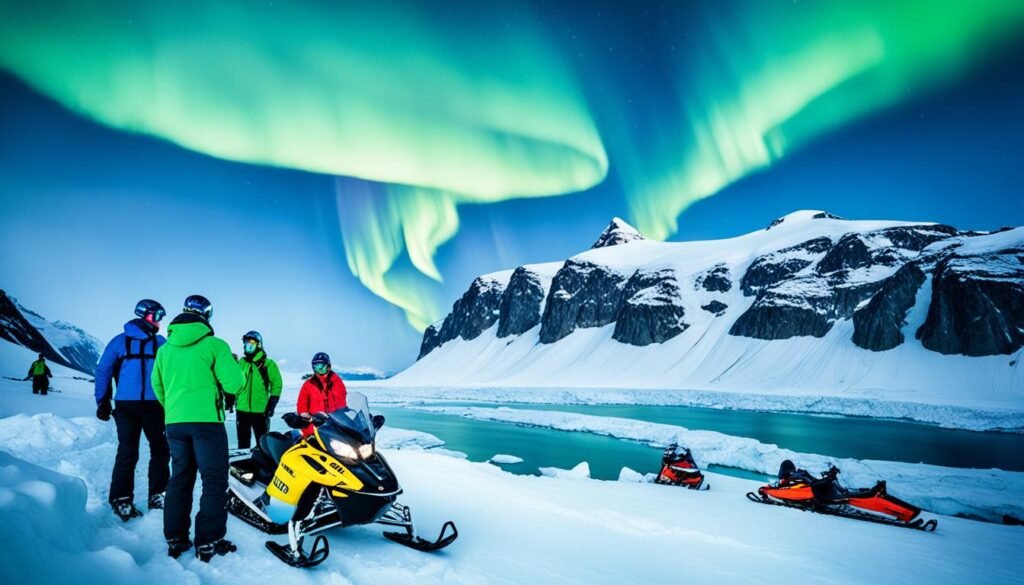
Frequently Asked Questions About the Northern Lights in Iceland
Q: When can you see the northern lights in Iceland 2022? A: The northern lights in Iceland can be seen from September to April. The best time is during November, December, and January.
Q: What are the best conditions for viewing the aurora borealis in Iceland? A: You need three things to see the northern lights in Iceland well. Those are good solar activity, clear skies, and little light pollution. The Icelandic Meteorological Office gives useful advice.
Q: Are there any northern lights tours or packages available in Iceland? A: Indeed, lots of tour groups have Iceland northern lights tours during the winter. These trips take you where the lights are best. Some even promise your money back if you don’t see them.
Q: Can I combine seeing the northern lights with other Icelandic experiences? A: For sure! There’s so much more to do in Iceland in the wintertime. You can ice cave, snowmobile, or just unwind in the geothermal baths. Adding these will make your journey unforgettable.
